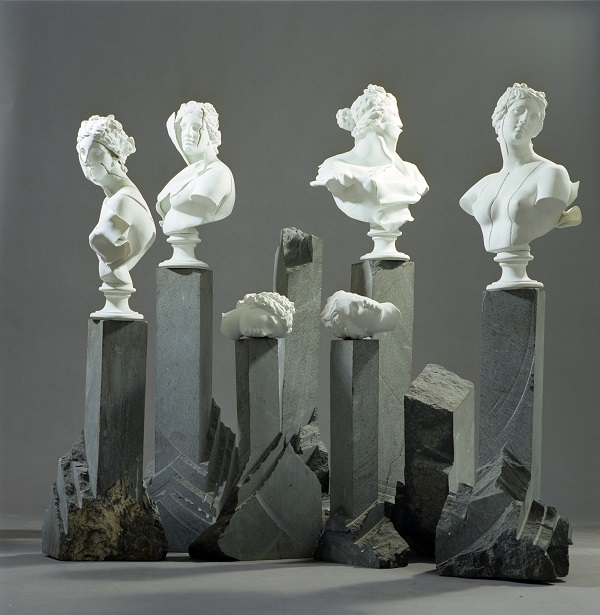 A sculptor and graduate of the Warsaw Academy of Fine Arts, in the studio of prof. Jerzy Jarnuszkiewicz she discovers that ‘repetition of nature ends as the problem of interpretation arises’. Interpreting, she uses a variety of materials: stone, metal, plaster, porcelain or epoxy. The beginning of the 1970s brings the famous Erotic Pillows series, which goes with the moral revolution of the time. The author inherently emphasizes the internal need for ‘affirmation of eroticism’. We also owe her the introduction of the male nude deprived of sanctimonious, filly cover ups to Polish visual art. Thanatos joins Eros in the following years. Dorota Jarecka writes about The Sarcophagus that ‘it is partly a bed, partly a tomb’ and as a result of crossing the seemingly most distant of barriers comes the artist’s fascination with geometric forms, combined with brutalism. Fatum is a pyramid of basalt cubes. ‘Only abstract form can bear the burden of the mystery of death’, Falender writes. In a nutshell: human life between the body and geometry.
A sculptor and graduate of the Warsaw Academy of Fine Arts, in the studio of prof. Jerzy Jarnuszkiewicz she discovers that ‘repetition of nature ends as the problem of interpretation arises’. Interpreting, she uses a variety of materials: stone, metal, plaster, porcelain or epoxy. The beginning of the 1970s brings the famous Erotic Pillows series, which goes with the moral revolution of the time. The author inherently emphasizes the internal need for ‘affirmation of eroticism’. We also owe her the introduction of the male nude deprived of sanctimonious, filly cover ups to Polish visual art. Thanatos joins Eros in the following years. Dorota Jarecka writes about The Sarcophagus that ‘it is partly a bed, partly a tomb’ and as a result of crossing the seemingly most distant of barriers comes the artist’s fascination with geometric forms, combined with brutalism. Fatum is a pyramid of basalt cubes. ‘Only abstract form can bear the burden of the mystery of death’, Falender writes. In a nutshell: human life between the body and geometry.
Organised by
Opera Gallery





